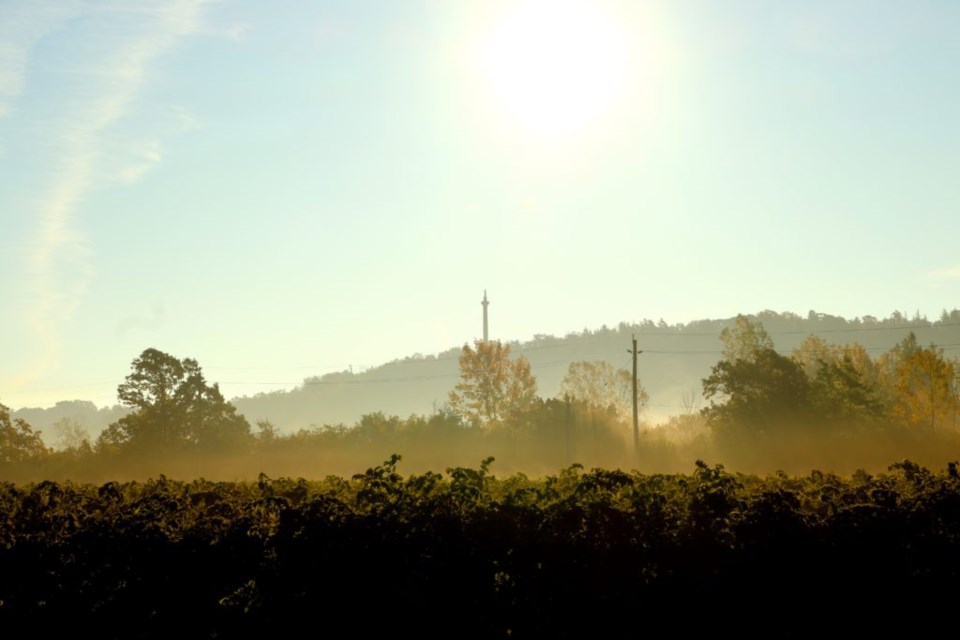
According the the Niagara Peninsula Conservation Authority’s 2018 Watershed Report Card, the municipality of Niagara-on-the-Lake has room for improvement in the category of forest conditions.
NOTL scores straight Ds and Fs throughout its various watersheds (Two Mile Creek, Four Mile Creek, and all the little creeks you may not know even have names for them). These scores translate to one simple fact — forest coverage in NOTL is about as low as it gets in Niagara. This is not only a sore spot for our native wildlife lacking proper habitat, but we are also missing out on the opportunities that forests can provide for the heartbeat of our town: agriculture.
Forests, even if remaining in narrow strips, behave as a guardian of the field as westerly winds can at times be gusty in NOTL. In severe windstorms, tender fruits and branches are protected by the wall of wood and leaves that may be left to border the property.
When these winds and intense precipitation events come upon NOTL, we rely on our blocks of forest to help keep the nutrients of our world-class soil on site. Over the years, weathering and erosion move exposed soil to other locations and can sometimes drastically change the landscape along the way. When the soil goes, the nutrients go with it.
Forests protect the soil by providing a ceiling with the canopy. They don’t allow wind to infiltrate through the trees, keeping the soil resting in ancient bliss at the forest floor, its properties leaching out into the surrounding rows of farm fruit.
As much as we may miss the summer weather, let’s reflect on those scorching 34 degree Celsius days where NOTL was shoulder to shoulder with visitors and vehicles. It gets hot. It also gets hot for our crops, especially if no rain comes paired with such extreme heat. NOTL would certainly benefit from having greater forest coverage, as they provide a net cooling service over a larger area. This would provide less stress on the crops and less stress on the people alike.
When the sun is roasting high above in the July sky, there is a lot of evaporation going on all around us. Water is being sucked up from the lake, the river, the ponds, and even out of the dirt. However, the forest stands strong as a protective prism, keeping plenty of moisture shaded away in the soil, logs, and trees themselves. There have been many times where I’ve trekked through woodlots in NOTL at the end of a dry summer, and still found patches of dark, wet soil under the leaves.
Overall, this service allows more water to remain in the soil or the whole general watershed, which the crops appreciate in midsummer.
The water flowing through the creeks in NOTL starts its journey up on top of the Niagara Escarpment, which is our town’s largest strip of remaining forest. Even from the beginning, that rainfall and runoff water is being filtered down the rocks and roots of the Escarpment, starting its life relatively filtered and healthy for our crops and creatures down below.
Many of our fruits in NOTL are pollinated by flying insects, especially the honey bee. Most bees you’ll see in large numbers around the countryside will be oozing out of bee boxes, placed by apiarists in strategic environments and near certain orchards. Bees that live in the wild, free of human influence, like to nest deep in tree cavities, especially those in forests with older, significantly larger trees. They like the shelter effect of a forest for the same reason the soil stays put there — less wind and rain exposure.
The bees are sharing space in a complex ecosystem here, home to hundreds of other insect species that also fly out to pollinate our crops. We live in the most species-rich region of the country when it comes to resident insects — we likely don’t even know about some of the species pollinating our apple and pear trees.
The concept of agroforestry combines agriculture and forestry knowledge to enhance crops, create habitat, and decrease our carbon footprint. It’s one of those win-win scenarios that continues to fuel itself, where nature helps us if we help it out a little, too.